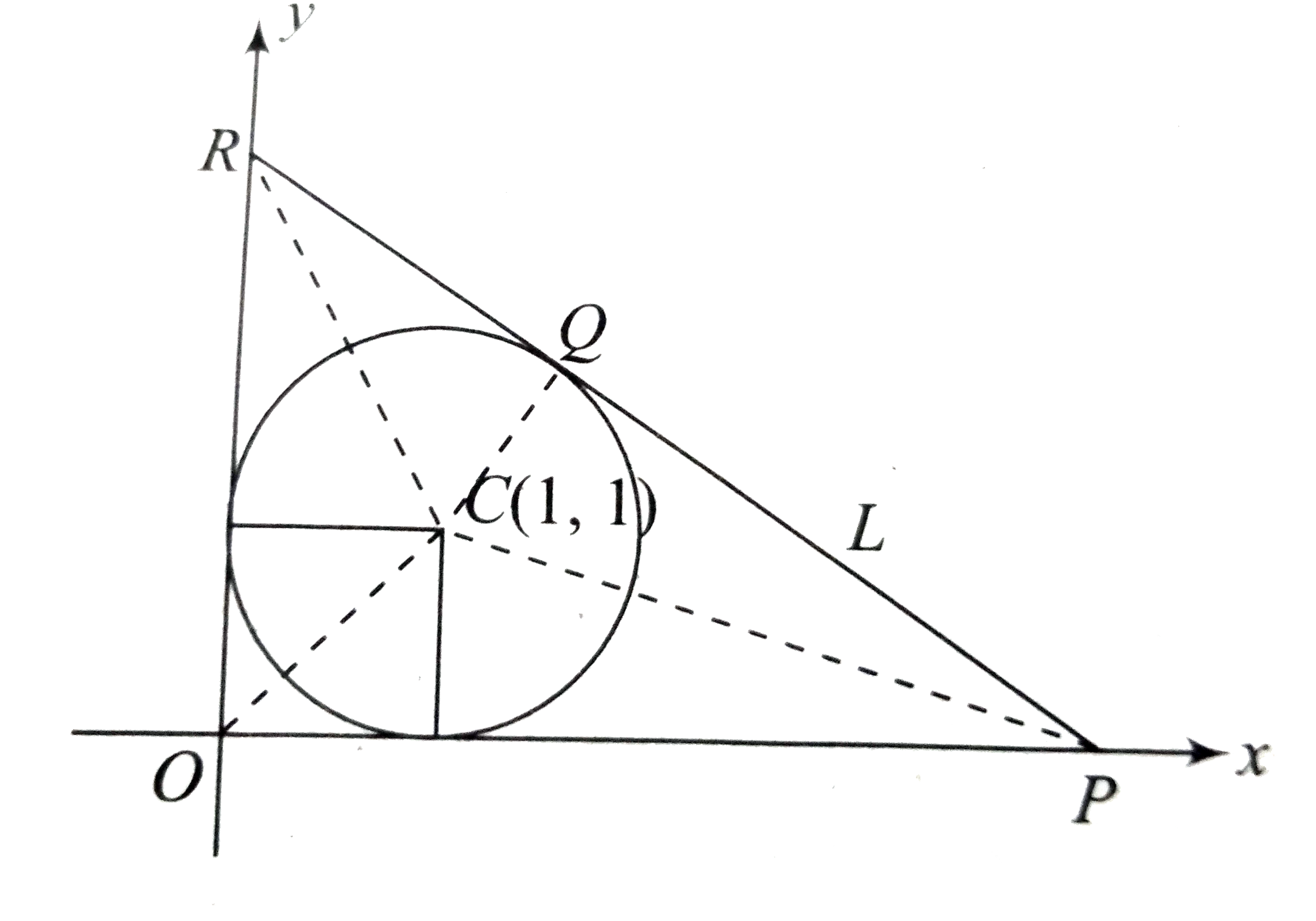Three concentric circles of which the biggest is x2+y2=1, have their radii in A.P If the line y=x+1 cuts all the circles in real and distinct points. The interval in which the common difference of the A.P will lie is:Solution in Bengali
The correct Answer is:d∈(0,121−(1)√2))
If d is the common difference of AP, then the radius of the smallest circle is 1-2d. If the given line y-x-1=0 cuts the smallest circle at real an distinct points, then it will definitely cut the remaining circles at real and distinct points. Therefore,
|0−0−1|√2<(1−2d)
or 1−2d>1√2
ord<12(1−1√2)
Hence, d∈(0,12(1−1√2))
Topper's Solved these Questions
- CIRCLE Book:CENGAGE PUBLICATIONChapter:CIRCLE Exercise:CONCEPT APPLICATION EXERCISE 4.18
Explore 1 Video
- CIRCLE Book:CENGAGE PUBLICATIONChapter:CIRCLE Exercise:CONCEPT APPLICATION EXERCISE 4.19
Explore 1 Video
- CIRCLE Book:CENGAGE PUBLICATIONChapter:CIRCLE Exercise:CONCEPT APPLICATION EXERCISE 4.16
Explore 1 Video
- BINOMIAL THEOREMBook:CENGAGE PUBLICATIONChapter:BINOMIAL THEOREMExercise:Comprehension
Explore 11 Videos
- CIRCLESBook:CENGAGE PUBLICATIONChapter:CIRCLESExercise:Comprehension Type
Explore 6 Videos
Similar Questions
Find the middle point of the chord of the circle x2+y2=25 intercepted on the line x−2y=2
View SolutionFind the locus of the midpoint of the chord of the circle x2+y2−2x−2y=0 , which makes an angle of 1200 at the center.
View SolutionIf the circle x2+y2−4x−8y−5=0 intersects the line 3x−4y=m at two distinct points, then find the values of m.
View SolutionConsider a G.P. with first term (1+x)n, |x|<1, common ratio 1+x2 and number of terms (n+1). Let 'S' be sum of all the terms of the G.P., then
The coefficient of xn is 'S' is
View Solution
In the diagram as shown, a circle is drawn with centre C(1,1) and radius 1 and a line L. The line L is tangent to the circle at Q. Further L meets the y-axis at R and the x-axis at P in such a way that the angle OPQ equals θ where 0<θ<π2.
Coordinate of Q is
View Solutionl6 Three concentric circles of which the common r l have their radi in AP with 23, T d lf line y r+ cuts all the circles in real distinct points, then (a) d (b) d (c) d 1 (d) d is any real number
View Solution(C) 245. Three concentric circles of which the biggest is x^(2)+y^(2)=1, have their radii in A.P If the line y=x+1 cuts all the circles in real and distinct points.The interval in which the common difference of the A.P will lie is:
View SolutionFind the range of values of m for which the line y=mx+2 cuts the circle x2+y2=1 at distinct or coincident points.
View SolutionFind the length of the chord 4x-3y=5 of the circle x^(2)+y^(2)=1 have their radii in A.P. If the line y=x+1 cuts all the circlesin real and distinct points then find the interval in which the common differenceof the A.P.will lie.
View SolutionIf the line y=mx-(m-1) cuts the circle x^(2)+y^(2)=4 at two real and distinct points then
View SolutionTwo concentric circles of which smallest is x2+y2=4, have the difference in radii as d, if line y=x+a cuts the circles in real points, then d lies in the interval
View SolutionThe range of values of m for which the line y=mx+2 cuts the circle x2+y2=1 at distinct or coincident points is :
View SolutionThe range of values of m for which the line y=mx+2cuts the circle x2+y2=1at distinct or coincident points is :
View SolutionRange of volues of m for which the st. line y=mx+2 cuts the circle x2+y2=1 in distinct or coincident points is:
View SolutionFind the range of values of m for which the line y=mx+2 cuts the circle x2+y2=1 at distinct or coincident points.
View SolutionThree concentric circles of which the biggest is x2+y2=1, have their radii in A.P If the line y=x+1 cuts all the circles in real and distinct points. The interval in which the common difference of the A.P will lie is:
View Solution
